Isobornyl acrylate
Synonym(s):Acrylic acid isobornyl ester;IBA
- CAS NO.:5888-33-5
- Empirical Formula: C13H20O2
- Molecular Weight: 208.3
- MDL number: MFCD00080424
- EINECS: 227-561-6
- SAFETY DATA SHEET (SDS)
- Update Date: 2025-12-17 09:50:40
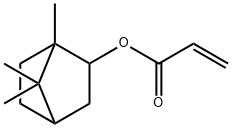
What is Isobornyl acrylate?
The Uses of Isobornyl acrylate
Isobornyl acrylate (IBA) can be used to prepare block copolymers with n-butyl acrylate by atom transfer radical polymerization (ATRP).
The Uses of Isobornyl acrylate
It is used as UVcuring EBcuring adhesive.
What are the applications of Application
Isobornyl acrylate can be used as a co-monomer with other acrylic monomers in the preparation of pressure-sensitive adhesives (PSAs) for optical applications. It is also used in the development of high-performance and stable polymer gate dielectrics for organic thin-film transistors (OTFTs). Furthermore, it can also used in the preparation of UV-curable waterborne polyurethane (WPU) by copolymerization.
Hazard
Moderately toxic by ingestion. Low toxicity by skin contact. A moderate skin and mild eye irritant.
Flammability and Explosibility
Non flammable
Synthesis
Isobornyl acrylate is prepared by reacting (-)- borneol,triethylamine with acryloyl chloride in anhydrous THF.Dissolve (-)- borneol (1.00 g, 6.48 mmol, 1 equiv) and triethylamine (0.98 g, 9.72 mmol, 1.5 equiv) in anhydrous THF (20 mL) in a 100 mL round-bottom flask. Add acryloyl chloride (0.88 g, 9.72 mmol, 1.5 equiv) dropwise to the reaction mixture at 0 °C. Allow the reaction to stir at room temperature overnight. Filter the reaction solution. Concentrate the reaction solution on the rotary evaporator. Wash the mixture with water (20 mL). Extract the mixture with dichloromethane (3x20 mL). Dry the combined organic phases over anhydrous sodium sulfate. Filter and concentrate the residue. Purify the crude product further by silica gel column chromatography (petroleum ether/ethyl acetate = 4:1) to obtain isobornyl acrylate.
 Fig Synthetic method of Isobornyl acrylate
Fig Synthetic method of Isobornyl acrylate
Properties of Isobornyl acrylate
| Melting point: | <-35°C |
| Boiling point: | 119-121 °C15 mm Hg(lit.) |
| Density | 0.986 g/mL at 25 °C(lit.) |
| vapor pressure | 1.3Pa at 20℃ |
| refractive index | n |
| Flash point: | 207 °F |
| storage temp. | Keep in dark place,Sealed in dry,Room Temperature |
| solubility | Chloroform (Slightly), Methanol (Slightly) |
| form | clear liquid |
| color | Colorless to Almost colorless |
| Water Solubility | Difficult to mix in water. |
| Sensitive | Light Sensitive |
| BRN | 2254825 |
| Stability: | Light sensitive |
| CAS DataBase Reference | 5888-33-5(CAS DataBase Reference) |
| EPA Substance Registry System | Isobornyl acrylate (5888-33-5) |
Safety information for Isobornyl acrylate
| Signal word | Warning |
| Pictogram(s) |
 Exclamation Mark Irritant GHS07  Environment GHS09 |
| GHS Hazard Statements |
H315:Skin corrosion/irritation H317:Sensitisation, Skin H319:Serious eye damage/eye irritation H335:Specific target organ toxicity, single exposure;Respiratory tract irritation H410:Hazardous to the aquatic environment, long-term hazard |
| Precautionary Statement Codes |
P261:Avoid breathing dust/fume/gas/mist/vapours/spray. P264:Wash hands thoroughly after handling. P264:Wash skin thouroughly after handling. P273:Avoid release to the environment. P280:Wear protective gloves/protective clothing/eye protection/face protection. P302+P352:IF ON SKIN: wash with plenty of soap and water. P305+P351+P338:IF IN EYES: Rinse cautiously with water for several minutes. Remove contact lenses, if present and easy to do. Continuerinsing. |
Computed Descriptors for Isobornyl acrylate
| InChIKey | PSGCQDPCAWOCSH-BREBYQMCSA-N |
New Products
Indole Methyl Resin tert-butyl 9-methoxy-3-azaspiro[5.5]undecane-3-carboxylate Boc-His(Boc)-OH 2-CTC Resin 4-Chloro-7-tosy1-7Hpyrrolo[2,3-d]pyrimidine 5,7-Dibromo-1H-indole 2,5-dichloro-N-hydroxy-4,6-dimethylpyridine-3-carboximidamide 2,2-Dimethoxy-7-azaspiro[3.5]nonane hydrochloride 4-chloromethyl-5-methyl-1,3-dioxol-2-one (DMDO-Cl) R-2-BENZYLOXY PROPIONIC ACID 1,1’-CARBONYLDIIMIDAZOLE 1,1’-CARBONYLDI (1,2-4 TRIAZOLE) N-METHYL INDAZOLE-3-CARBOXYLIC ACID 4-((2-hydroxyethyl)thio)benzoic acid 1-(TERT-BUTOXYCARBONYL)-2-PYRROLIDINONE Methyl 6-methylnicotinate 3-Pyridineacrylic acid tert-Butyl carbazate TETRAHYDRO-2H-PYRAN-3-OL 2-((4-morpholinophenylamino) (methylthio) methylene) malononitrile 3-(4-morpholinophenylamino)-5-amino-1H-pyrazole-4-carbonitrile 2,4-dihydroxybenzaldehyde 1,3-Diethyl-1,3-Diphenylurea Methyl 2-methylquinoline-6-carboxylateRelated products of tetrahydrofuran
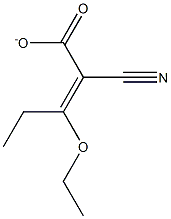
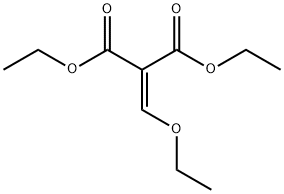
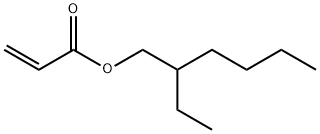

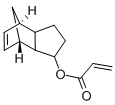
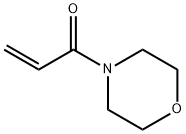

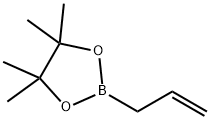
You may like
-
 Isobornyl Acrylate (stabilized with MEHQ) CAS 5888-33-5View Details
Isobornyl Acrylate (stabilized with MEHQ) CAS 5888-33-5View Details
5888-33-5 -
 Isobornyl acrylate, stabilized with 100ppm 4-methoxyphenol CAS 5888-33-5View Details
Isobornyl acrylate, stabilized with 100ppm 4-methoxyphenol CAS 5888-33-5View Details
5888-33-5 -
 Isobornyl acrylate CAS 5888-33-5View Details
Isobornyl acrylate CAS 5888-33-5View Details
5888-33-5 -
 Pyridine 99.5% HPLC /UV SpectroscopyView Details
Pyridine 99.5% HPLC /UV SpectroscopyView Details
110-86-1 -
 Piperazine Spot supply, best priceView Details
Piperazine Spot supply, best priceView Details
110-85-0 -
 Dibutyl PhthalateView Details
Dibutyl PhthalateView Details
84-74-2 -
 Imidazole Spot supply, competitive priceView Details
Imidazole Spot supply, competitive priceView Details
288-32-4 -
 Thiourea 99% ARView Details
Thiourea 99% ARView Details
62-56-6
